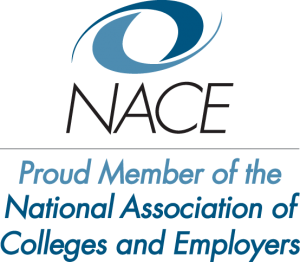Losing employees through staff attrition and turnover is costly – it’s plain and simple.
Between costs associated with separation, loss of productivity, recruitment, interviewing, training, and onboarding, the loss of a single employee is estimated to cost businesses 50% of that individual’s annual salary. Replacement costs can be lower for entry-level roles while replacement costs are significantly higher for professional, technical, and supervisory positions.
Online calculators or detailed forms, like this one from the Society for Human Resource Management, can help you pinpoint the financial impact that employee turnover is having on your bottom line.
There are different reasons why an employee might leave your organization. While staff attrition and turnover both cost your organization money, there are subtle differences between the two concepts and different steps to take to remediate the issues.
What is Staff Attrition?
Definition:
- Staff attrition refers to the loss of employees through a natural process, such as retirement, resignation, elimination of a position, personal health, or other similar reasons. With attrition, an employer will not fill the vacancy left by the former employee.
Pros:
- Can reduce costs when an organization may be facing financial distress
- Usually considered more of an amicable or cordial departure from the organization
Cons:
- Reduction in size or strength of workforce
- Remaining job duties can increase the work load for remaining employees
Example:
- After 25 years with ACME Corporation, Susan is retiring, and the company does not plan to hire a replacement for her. Susan is considered part of ACME Corporation’s staff attrition this year.
- After experiencing hefty financial losses, Initech has determined they must layoff a number of its employees. Bill was notified that his position has been eliminated and that there is not another position available for him. He is being laid off and is part of Initech’s staff attrition this year.
Solution:
- As it is defined, organizations either do not have much control over staff attrition (e.g., retirement), or they are directly controlling attrition in a demonstrated effort to reduce costs.
What is Staff Turnover?
Definition:
- The voluntary or involuntary loss of an employee, with the organization’s intent to fill the position vacancy. Turnover can be caused by similar reasons as attrition, but turnover is usually viewed negatively and as a burden for employers.
- Voluntary turnover refers to an employee’s decision to leave the organization, possibly due a better job offer, a lack of amble growth or development opportunities in the current role, poor pay, a hostile work environment, a feeling that they did not fit the company culture, or more.
- Involuntary turnover refers to the termination or firing of an employee (with intent to replace) due to factors such as poor performance, behavioral issues, or serious malicious, or more.
- To calculate your company’s turnover rate, you divide the number of employees who leave in a given year by the total number of positions you have available. Keep in mind that some industries have higher turnover rates than others.
Pros:
- Can be beneficial if problematic or poor-performing employees choose to leave the organization
- Can be an opportunity to hire a person who is a better fit for the job and your company
Cons:
- Reduction in size or strength of workforce
- Remaining job duties can increase the work load for remaining employees
- High costs associated with finding replacements (especially for more senior positions)
- Consistently high turnover rate could indicate there are issues with working conditions
- Prevents you from building and maintaining a consistent company culture
- Continuously directing efforts to training and onboarding
- Loss of productivity, as it takes time to get other employees up to speed to pick up where the prior employee left off
Example:
- Rebecca has worked with ACME Corporation for the last 3 years. However, Rebecca has never received a promotion. Rebecca has decided to pursue another job opportunity with ACME’s competitor who has a clear path for upward progression within the company. Rebecca is considered part of ACME Corporation’s staff turnover this year.
- Matt recently joined Initech 6 months ago and is their top TPS report writer. He has already received a performance bonus for the quality and timeliness of his reports. However, working in a collaborative environment is highly important for Matt to be satisfied at work and there are no opportunities for Matt to work with others at Initech. He quit Initech after just 6 months in search of a role with another company that places more of an emphasis on team-work and collaboration. Matt is considered part of Initech’s staff turnover this year.
Solution:
- Rather than waiting for months to see if an employee is a good fit for the job and for your organizational culture, there are steps you can take during the hiring process to reduce the likelihood of employee turnover.
- Predictive hiring solutions, like jobZology, take the guesswork out of employee fit using candidate assessments during the hiring process.
- By knowing your candidate’s unique characteristics before you even meet them, and objectively mapping those to the desired characteristics for the job and for the organization as a whole, you can reduce turnover and optimize employee retention.
- For example, jobZology could have revealed that Matt prefers collaborative work environments long before he made it to a second-round interview at Initech (a highly non-collaborative environment). We could have warned Initech that this misalignment would lead to Matt’s unhappiness and probable turnover. Using jobZology, Initech could have hired someone else for the position, who would enjoy the type of environment that Initech can offer for its employees.
Learn more about jobZology pre-hire assessments and scientific methods for reducing employee turnover here.







